Hydrothermal vents are openings in the ocean floor where geothermally heated water is released, forming unique ecosystems deep beneath the Earth’s surface. They were first discovered in the mid-1970s, revolutionizing our understanding of life and its ability to thrive in extreme environments. These vents are found primarily along mid-ocean ridges, where tectonic plates diverge, allowing water to interact with magma beneath the Earth’s crust.
The study of hydrothermal vents has implications for various scientific fields, including biology, geology, and astrobiology. It offers insights into the origin of life on Earth and the potential for life on other celestial bodies.
Researchers continue to explore these enigmatic environments to understand further the complex interactions between geological processes and biological communities at the depths of the oceans.
Formation and Geography

This section illuminates the intricate processes and geographic diversity associated with hydrothermal vents.
Tectonic Activity and Vents
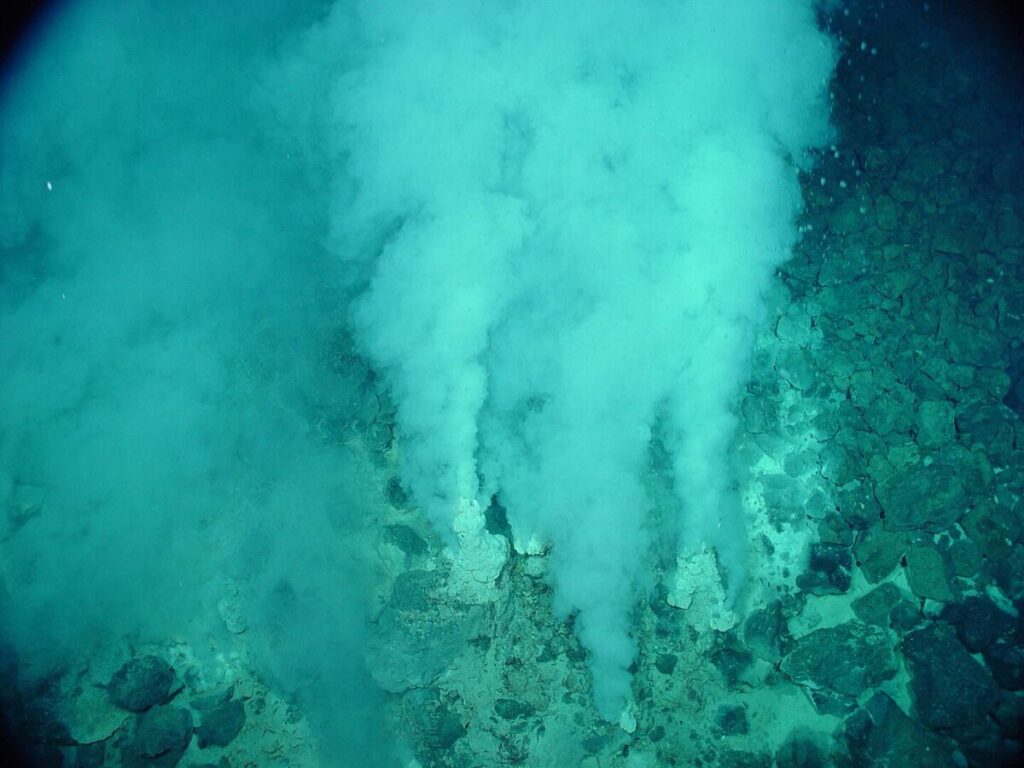
Hydrothermal vents typically form along mid-ocean ridges where tectonic plates diverge, allowing magma to rise and create new seafloor. The interaction between the cold ocean water and the hot magma leads to the formation of these unique underwater hot springs.
As seawater percolates through fissures in the ocean crust, it becomes superheated, dissolving various minerals and resulting in the characteristic vent fluid.
Types of Hydrothermal Vents
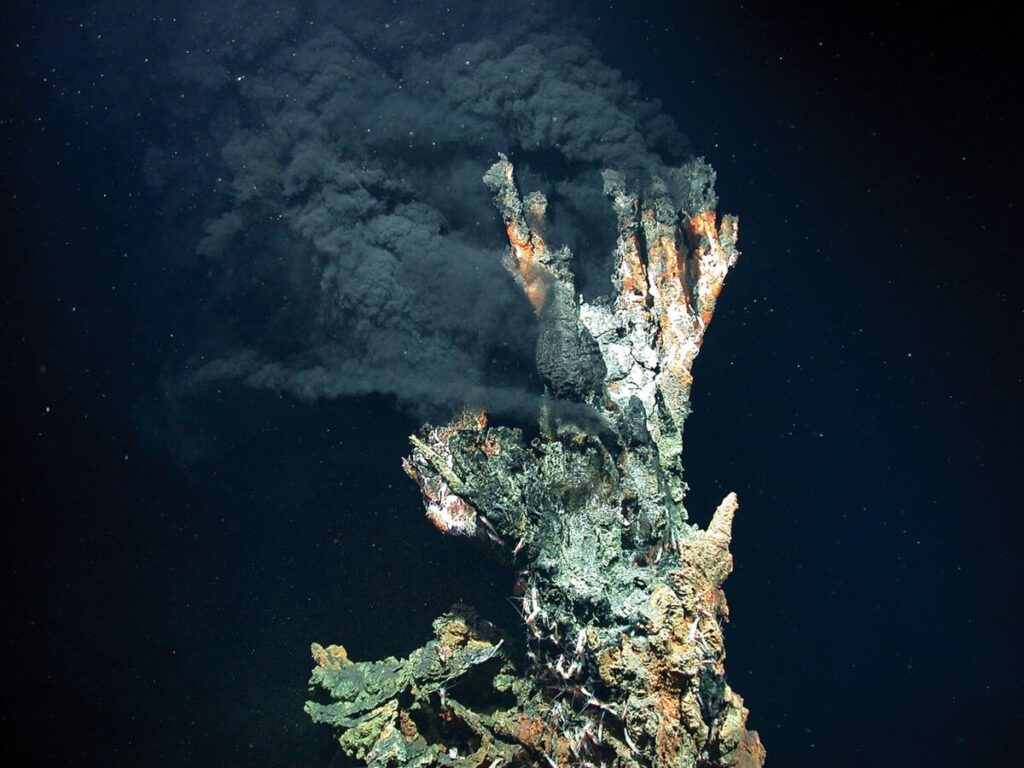
There are mainly two hydrothermal vents characterized by the minerals they emit: black and white smokers. Black smokers discharge high-temperature fluids rich in sulfides that precipitate to form dark-colored chimneys. In contrast, white smokers release cooler fluids containing lighter barium, calcium, and silicon-rich minerals, creating lighter-colored structures.
Chemical and Physical Properties

The vents expel superheated, mineral-rich fluids into the ocean, creating hot springs teeming with unique life forms that thrive on the chemical energy supplied by these minerals.
The physical environment of hydrothermal vents is extreme, with high pressure and temperatures that can reach up to 400°C. The vent fluid supports a complex ecosystem that relies on chemosynthesis rather than photosynthesis for energy.
Ecology of Hydrothermal Vents
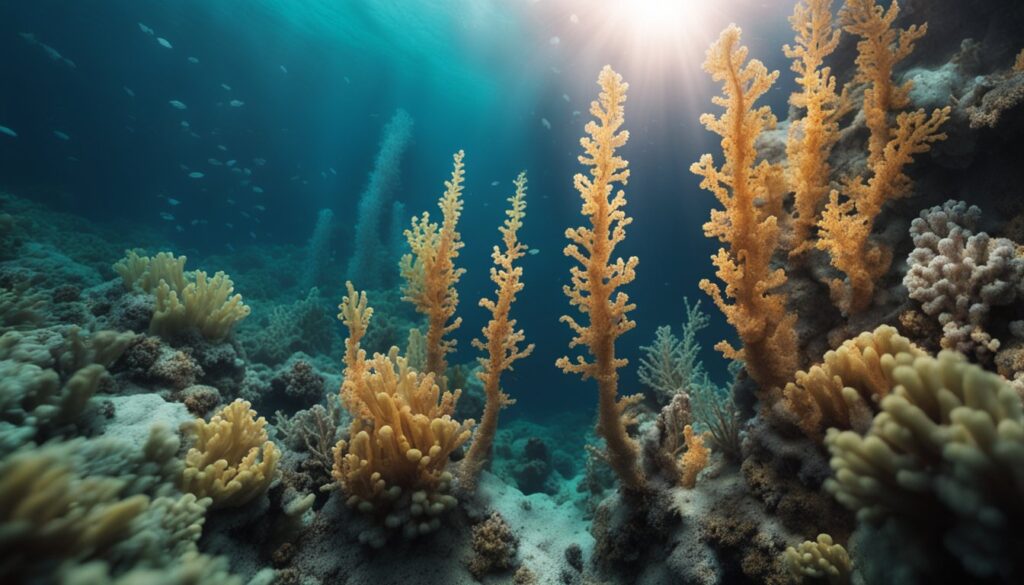
Hydrothermal vents are deep-sea ecosystems teeming with unique life forms that rely on chemosynthesis rather than photosynthesis, creating a complex web of relationships unseen anywhere else on Earth.
Unique Ecosystems

Hydrothermal vents are characterized by extreme conditions: high pressure, temperatures ranging from 60 to 460 degrees Celsius, and complete darkness. Despite these harsh conditions, these ecosystems along mid-ocean ridges and volcanic areas harbor diverse organisms.
The vent’s structures, often called chimneys, spew mineral-rich water that includes sulfides, which serve as the foundation for life here. The absence of sunlight in the deep ocean means organisms cannot rely on photosynthesis.
Instead, these ecosystems are based on chemosynthesis, where bacteria convert chemicals like hydrogen sulfide into usable energy, forming the base of the local food webs.
Symbiotic Relationships

Symbiotic relationships are a cornerstone of vent ecosystems, particularly between tubeworms and vent bacteria. Tubeworms, which lack digestive tracts, harbor chemosynthetic bacteria within their bodies. These bacteria convert the chemicals spewing from the vents into nutrients on which the worms depend.
In return, the tubeworms provide the bacteria a protected environment and access to vent chemicals. This partnership is crucial for the survival of many species around vents and demonstrates the intricate symbiotic relationships that enable life in this extreme environment.
See Related: What Are Species? Definition & Guide to Biodiversity
Thermal Vent Food Webs
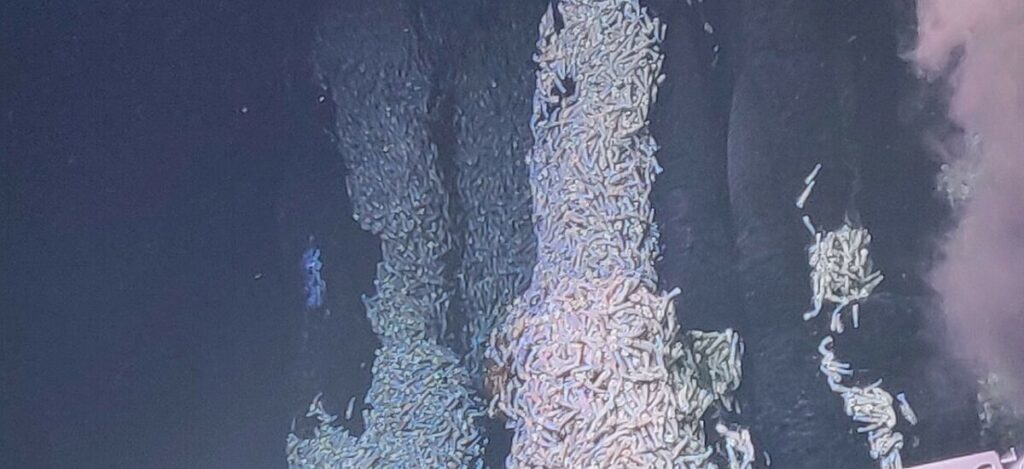
At the heart of hydrothermal vent ecosystems lies a complex food chain that diverges significantly from those found in surface environments. Chemosynthetic bacteria form the base, using chemical reactions to create organic matter.
These bacteria are either free-living or symbiotic with larger host organisms. Grazers such as snails and crabs consume the bacteria directly, while top predators like shrimp feed on smaller animals. This consumption chain creates a robust food web, efficiently passing energy from one level to another, sustaining the diverse biological communities around the vents.
Biogeochemical Processes

In the deep ocean, hydrothermal vents host complex biogeochemical processes, prominently highlighted by transforming minerals and energy to sustain diverse microbial life forms.
Chemosynthesis Over Photosynthesis

Chemosynthesis is at the heart of hydrothermal vent ecosystems, where bacteria and archaea convert inorganic substances into organic matter. Unlike the surface world, where sunlight drives photosynthesis, vent organisms rely on the chemical energy harnessed from seawater reactions with minerals. Hydrogen sulfide, a key chemical in vent fluid, plays a vital role in this process as microbes oxidize it to gain energy, supporting vibrant communities without sunlight.
Mineral Deposition and Vent Chemistry

The interactions between vent fluid and seawater result in complex chemical reactions that lead to the deposition of sulfide minerals. These mineral chimneys are rich in compounds, including iron, copper, and zinc sulfides, forming through dynamic processes that deposit layers of minerals around the vents.
These deposits not only influence the vent’s chemistry but serve as habitat for chemosynthetic organisms, which in turn catalyze further mineral and energy transformations.
Human Interaction and Impacts

Deep-sea hydrothermal vents are unique ecosystems with high biodiversity. Human activities, particularly research and seafloor mining, significantly impact these ecosystems.
Research and Exploration
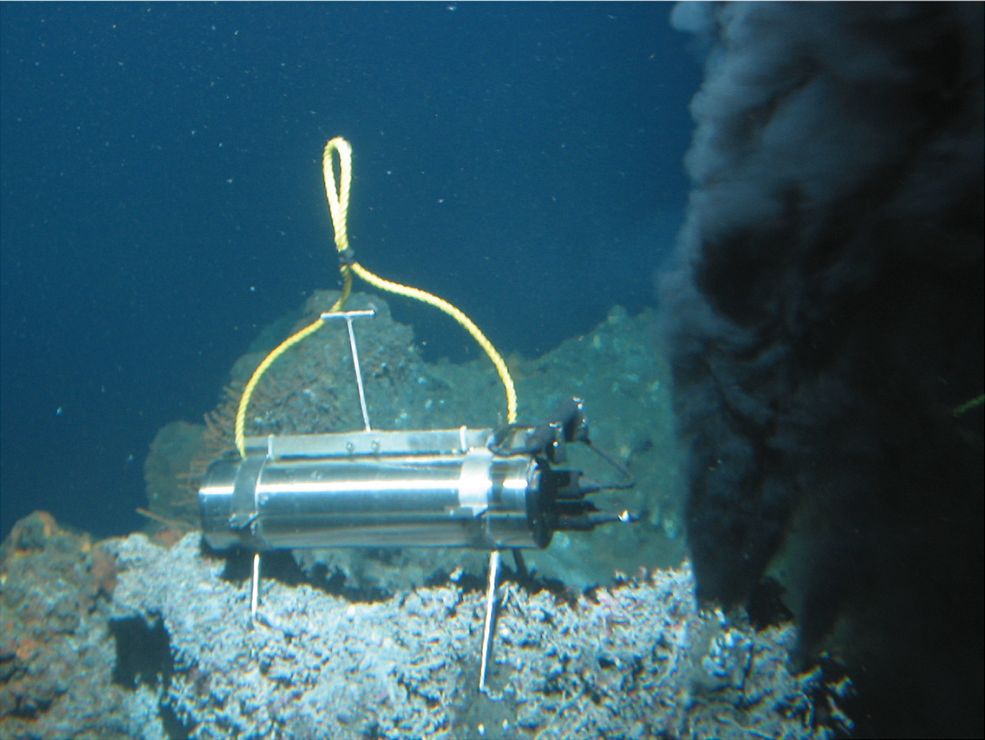
Scientists from institutions like the Woods Hole Oceanographic Institution have been exploring hydrothermal vents to understand their complex ecology and to discover new species.
While this research is crucial for scientific advancement, it also brings human presence to previously untouched areas. Introducing research equipment and sampling can disrupt the local habitat, although scientists often strive to minimize their impact.
Environmental Challenges
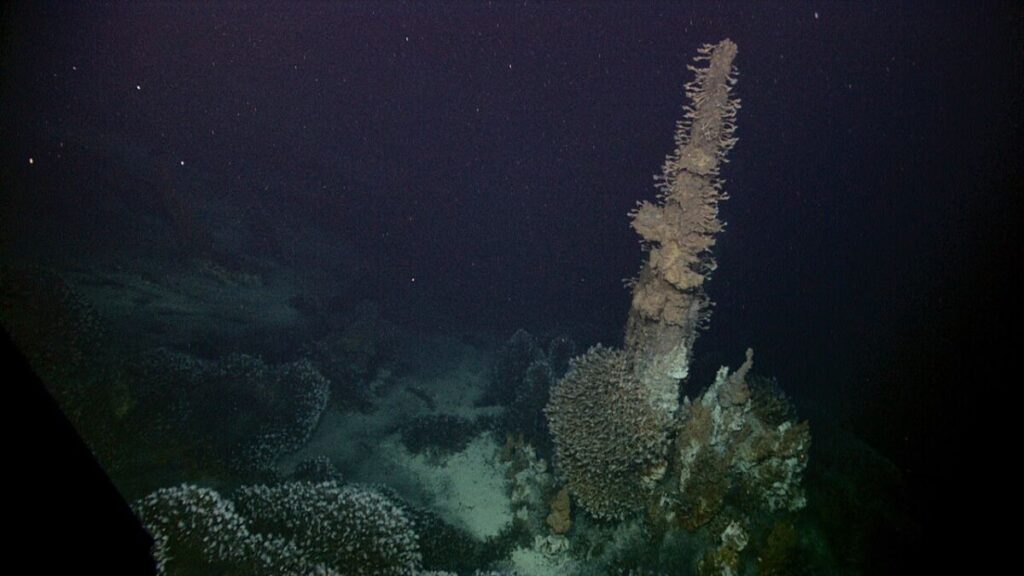
The extraction of mineral deposits from the seafloor presents major environmental challenges. Seafloor mining targets the rich deposits around hydrothermal vents, leading to the destruction of habitats and the release of toxic minerals into the water column.
These activities threaten the vents’ ecosystems and can have broader impacts on ocean health. With the potential for substantial economic gain, the threats posed by seafloor mining continue to be a contentious issue, balancing the demand for resources against environmental preservation.
Hydrothermal Vents in the Search for Extraterrestrial Life
Hydrothermal vents on Earth may be key to understanding potential life in the outer Solar System, providing a valuable comparison of the conditions on icy moons such as Europa and Enceladus.
Analogues for Extraterrestrial Environments

Europa and Saturn’s moon Enceladus are icy worlds with subsurface oceans that are considered prime candidates in the search for extraterrestrial life. Hydrothermal vents on Earth foster unique ecosystems by providing energy and nutrients through chemical processes despite being in environments devoid of sunlight. This chemosynthetic basis for life is what scientists hypothesize could also support life beneath the ice shells of Europa and Enceladus, where sunlight cannot penetrate.
- Jupiter’s moon Europa:
- Possibility of a subsurface saline ocean.
- Potential hydrothermal activity on the ocean floor.
- Saturn’s moon Enceladus:
- Evidence of a global subsurface ocean.
- Detection of hydrothermal-like activity through plumes.
Theories of Life Beyond Earth
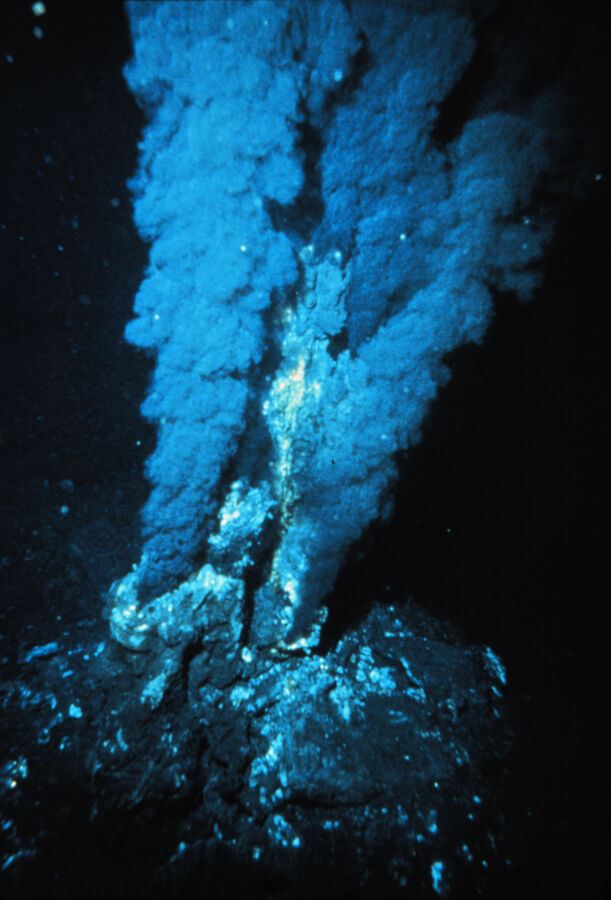
The discovery of robust ecosystems around hydrothermal vents has led to various theories that life elsewhere in the solar system could evolve under similar conditions.
In the silicate-rich and potentially alkaline waters, as may be found on Europa and Enceladus, life might arise through processes similar to those that possibly kickstarted life on Earth billions of years ago.
These theories are grounded in understanding life’s adaptability to extreme environments and the fundamental chemical reactions that can occur without sunlight.
- Theories involving life’s evolution at vents:
- Life may originate in conditions akin to those of Earth’s deep-sea vents.
- Hydrothermal systems could provide the necessary energy and minerals to synthesize organic compounds.
- Implications for the Solar System:
- Both Europa and Enceladus show signs of geothermal activity.
- The nature of potential life could fundamentally differ from that on Earth, evolving independently and without reliance on photosynthesis.
See Related: What Lives In The Deepest Part of the Ocean? 7 Incredible Mariana Trench Animals
How do hydrothermal vents emerge in the Hadal Zone?
Hydrothermal vents are fascinating and mysterious geological features that emerge in the Hadal Zone, the deepest part of the ocean. These vents are formed through a complex volcanic activity and water circulation process. Here’s a breakdown of how hydrothermal vents emerge in the Hadal Zone:
- Tectonic Activity: In the Hadal Zone, the Earth’s tectonic plates are subjected to immense pressure, resulting in frequent volcanic eruptions and the creation of underwater volcanoes. These volcanic activities form the foundation for hydrothermal vent formation.
- Fractures and Fissures: As the Earth’s crust in the Hadal Zone experiences volcanic activity, it becomes fractured and fragmented. The intense pressure leads to the formation of cracks, fissures, and faults in the ocean floor.
- Water Circulation: Seawater from the surrounding areas enters these fractures and fissures, eventually breaking into the volcanic bedrock. As the water moves deeper into the Earth’s crust, it gets heated by the extreme temperatures of the molten magma.
- Chemistry at Work: As the heated seawater comes into contact with the hot magma, it undergoes various chemical reactions. This process involves leaching minerals from the volcanic bedrock and releasing dissolved gases, mainly hydrogen sulfide.
- Rising Plumes: The hot water, enriched with minerals and gases, rises back towards the ocean floor. It forms buoyant plumes that escape through the cracks and fractures, producing hydrothermal vents. These vents act as chimneys, expelling the superheated water into the frigid ocean depths.
- Unique Ecosystems: The mineral-rich fluids released by hydrothermal vents create a highly unusual and extreme environment. They nourish chemosynthetic bacteria that thrive near the vents. These bacteria are the foundation of an intricate food chain, supporting a range of organisms like giant tubeworms, clams, crabs, and other deep-sea creatures.
Understanding the emergence of hydrothermal vents in the Hadal Zone provides valuable insights into the Earth’s geology and the biodiversity of deep-sea ecosystems. Continued exploration of these vents allows scientists to uncover new species and better understand our planet’s complex systems.
Related Resources:
- Mariana Trench: Exploring the Deepest Oceanic Abyss
- Incredibly Cool Sea Creatures to Know
- Sea Turtle Conservancy


